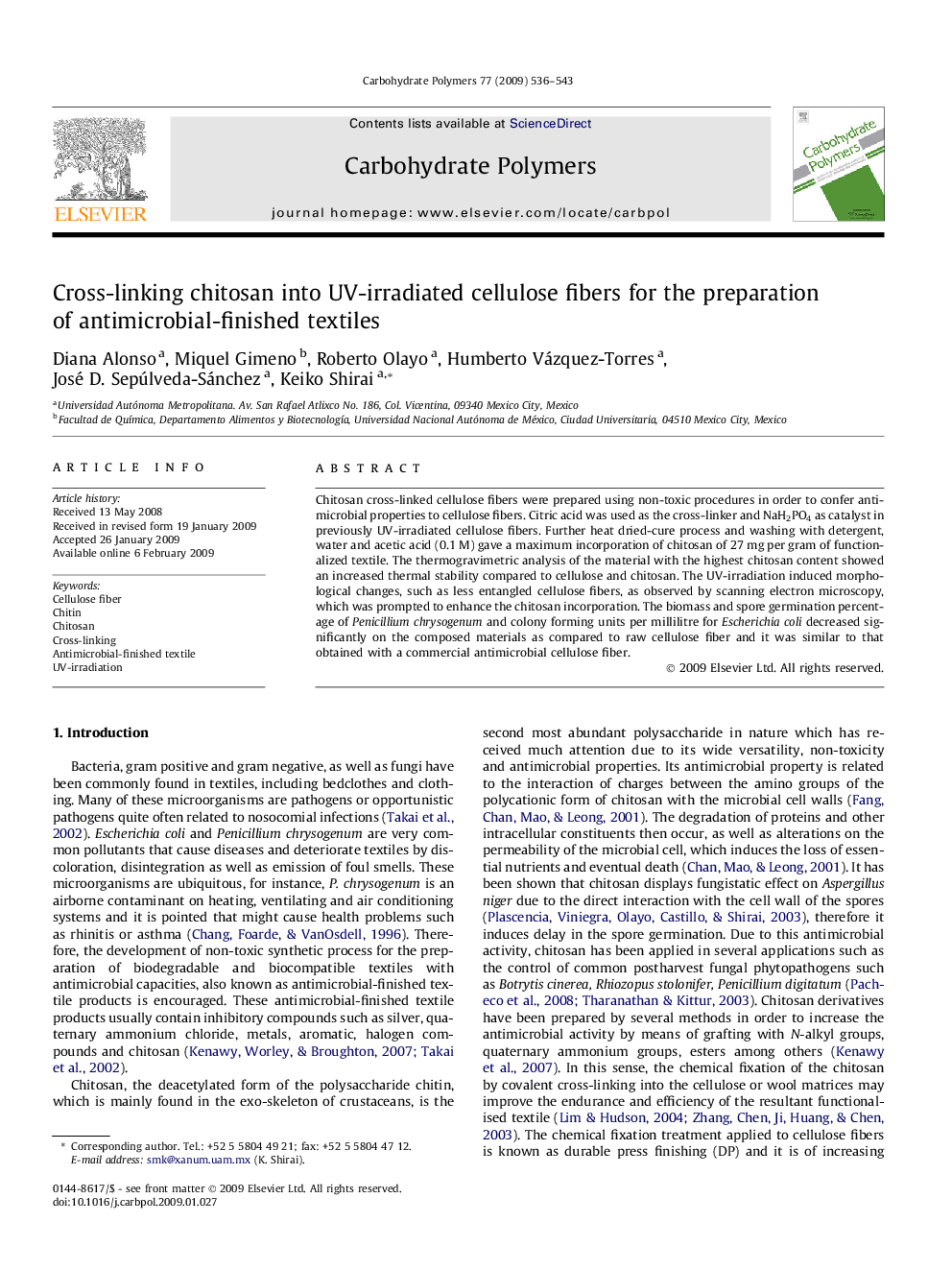| Article ID | Journal | Published Year | Pages | File Type |
|---|---|---|---|---|
| 1386149 | Carbohydrate Polymers | 2009 | 8 Pages |
Chitosan cross-linked cellulose fibers were prepared using non-toxic procedures in order to confer antimicrobial properties to cellulose fibers. Citric acid was used as the cross-linker and NaH2PO4 as catalyst in previously UV-irradiated cellulose fibers. Further heat dried-cure process and washing with detergent, water and acetic acid (0.1 M) gave a maximum incorporation of chitosan of 27 mg per gram of functionalized textile. The thermogravimetric analysis of the material with the highest chitosan content showed an increased thermal stability compared to cellulose and chitosan. The UV-irradiation induced morphological changes, such as less entangled cellulose fibers, as observed by scanning electron microscopy, which was prompted to enhance the chitosan incorporation. The biomass and spore germination percentage of Penicillium chrysogenum and colony forming units per millilitre for Escherichia coli decreased significantly on the composed materials as compared to raw cellulose fiber and it was similar to that obtained with a commercial antimicrobial cellulose fiber.
